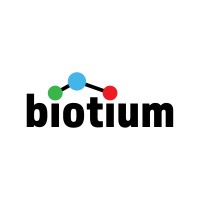UGT1A9 Monoclonal / CF568 / UGT1A9/1229
Product Details
| Description | UGT1A9 Monoclonal Mouse Antibody (UGT1A9/1229) | |
|---|---|---|
| Conjugate | CF568 | |
| Clone | UGT1A9/1229 | |
| Target Species | Human | |
| Applications | FC, IF | |
| Supplier | Biotium | |
| Catalog # | Sign in to view product details, citations, and spectra | |
| Size | ||
| Price | ||
| Antigen | ||
| Host | ||
| Isotype |
About UGT1A9
This gene encodes a UDP-glucuronosyltransferase, an enzyme of the glucuronidation pathway that transforms small lipophilic molecules, such as steroids, bilirubin, hormones, and drugs, into water-soluble, excretable metabolites. This gene is part of a complex locus that encodes several UDP-glucuronosyltransferases. The locus includes thirteen unique alternate first exons followed by four common exons. Four of the alternate first exons are considered pseudogenes. Each of the remaining nine 5' exons may be spliced to the four common exons, resulting in nine proteins with different N-termini and identical C-termini. Each first exon encodes the substrate binding site, and is regulated by its own promoter. The enzyme encoded by this gene is active on phenols. [provided by RefSeq, Jul 2008]
This gene encodes a UDP-glucuronosyltransferase, an enzyme of the glucuronidation pathway that transforms small lipophilic molecules, such as steroids, bilirubin, hormones, and drugs, into water-soluble, excretable metabolites. This gene is part of a complex locus that encodes several UDP-glucuronosyltransferases. The locus includes thirteen unique alternate first exons followed by four common exons. Four of the alternate first exons are considered pseudogenes. Each of the remaining nine 5' exons may be spliced to the four common exons, resulting in nine proteins with different N-termini and identical C-termini. Each first exon encodes the substrate binding site, and is regulated by its own promoter. The enzyme encoded by this gene is active on phenols. [provided by RefSeq, Jul 2008]
About CF568
CF®568 from Biotium is a fluorophore with an excitation peak at 562 nm and an emission peak at 583 nm. It can be useful in both fluorescence microscopy and flow cytometry. It is spectrally similar to Alexa Fluor™ 568 and ATTO 565. However, in flow cytometry, a superior alternative is R-PE. In microscopy, CF®568 is validated in super-resolution imaging by STORM, STED, Structured Illumination (SIM) and TIRF.
CF®568 from Biotium is a fluorophore with an excitation peak at 562 nm and an emission peak at 583 nm. It can be useful in both fluorescence microscopy and flow cytometry. It is spectrally similar to Alexa Fluor™ 568 and ATTO 565. However, in flow cytometry, a superior alternative is R-PE. In microscopy, CF®568 is validated in super-resolution imaging by STORM, STED, Structured Illumination (SIM) and TIRF.
Experiment Design Tools
Panel Builders
Looking to design a Microscopy or Flow Cytometry experiment?
Validation References
Reviews & Ratings
| Reviews |
|---|
Looking for more options?
198 UGT1A9 antibodies from over 14 suppliers available with over 49 conjugates.





